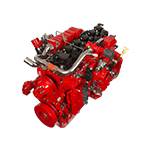Oct . 22, 2024 08:38 Back to list
Components and Functionality of Brake Drum Systems in Vehicles
Understanding Brake Drums and Their Parts A Comprehensive Guide
Brake drums are crucial components of a vehicle's braking system, particularly in older cars and certain heavier vehicles like trucks. While disc brakes have gained popularity in modern vehicles due to their efficiency and performance, brake drums still play an essential role in many applications. Understanding the different parts of brake drums and how they function can give car owners better insights into vehicle maintenance and safety.
What is a Brake Drum?
A brake drum is a cylindrical component that houses the braking mechanism, primarily used in drum brake systems. When the brake pedal is pressed, brake shoes inside the drum expand against its inner surface, creating friction that slows down or stops the vehicle. Brake drums are typically made of cast iron or aluminum with a smooth interior surface that ensures effective friction.
Key Components of Brake Drums
1. Brake Drum The outermost part of the assembly, the brake drum is a heavy-duty, circular component that spins with the wheel. It is designed to absorb and dissipate heat generated during braking.
2. Brake Shoes These are the friction materials that press against the inner surface of the drum. Typically, brake shoes are made from a composite material that consists of friction modifiers and metal fibers to enhance performance and longevity.
3. Backing Plate This part serves as a mounting surface for the brake shoes and houses the necessary hardware. It is usually made of stamped steel and provides structural support to the braking system.
4. Wheel Cylinder This hydraulic component is responsible for pushing the brake shoes outward against the drum when brake fluid is applied. It consists of two pistons that operate symmetrically, ensuring even distribution of pressure.
5. Expansion Springs These springs ensure that the brake shoes retract when the brake pedal is released. They play a vital role in maintaining proper brake function and reducing drag.
6. Hold-Down Springs These springs secure the brake shoes to the backing plate, preventing them from moving excessively during operation. They maintain the alignment and stability of the braking system.
7. Adjuster Mechanism This component includes a threaded rod and a wheel that allows for the automatic adjustment of the brake shoes as they wear down. This ensures that the shoes remain close to the drum, enhancing braking efficiency.
brake drums parts

Importance of Brake Drums
Understanding the function of brake drums and their parts is essential for vehicle safety. Over time, brake drums can become worn or warped due to the heat generated during braking. Symptoms of problems with brake drums may include unusual noises, a pulsating feeling in the brake pedal, or longer stopping distances.
Regular inspections and maintenance of the braking system are necessary to ensure optimal performance. This typically includes checking the condition of brake shoes, drum surfaces, springs, and the wheel cylinder for leaks or wear.
Maintenance Tips
1. Regular Inspections Have your brake drums checked periodically by a qualified mechanic, especially if you notice any changes in braking performance.
2. Brake Fluid Checks Ensure that your brake fluid is at the proper level and in good condition. Contaminated brake fluid can lead to reduced braking efficiency.
3. Replace Worn Components If brake shoes or the brake drum are showing signs of wear, replace them promptly. This proactive approach can prevent more severe damage and costly repairs.
4. Follow Manufacturer's Guidelines Always adhere to the vehicle manufacturer’s recommendations regarding brake maintenance to ensure safety and performance.
5. Consider Upgrades If you're driving an older vehicle and experience frequent brake issues, consider upgrading to a disc brake system. Disc brakes typically provide better performance and durability.
Conclusion
In conclusion, brake drums and their parts play a fundamental role in vehicle safety and performance. Understanding their components and how they work allows car owners to maintain their vehicles effectively and drive safely. By paying attention to the braking system and conducting regular maintenance, you can enjoy a safer driving experience and prolong the life of your vehicle’s braking components. Remember, when it comes to brakes, it’s always better to be proactive than reactive.
-
Scania Brake Drums: OEM Quality for Optimal Safety & Durability
NewsAug.16,2025
-
R.V.I: Advanced Remote Visual Inspection for Precision
NewsAug.15,2025
-
Discover HYUNDA: Innovative Vehicles, Equipment & Solutions
NewsAug.14,2025
-
R.V.I: Unlock Advanced Insights & Real-time Performance
NewsAug.13,2025
-
Kamaz Brake Drum: Durable & Reliable for Heavy Duty Trucks
NewsAug.12,2025
-
Heavy Duty Iveco Brake Drum - Premium Quality & Safety
NewsAug.11,2025
